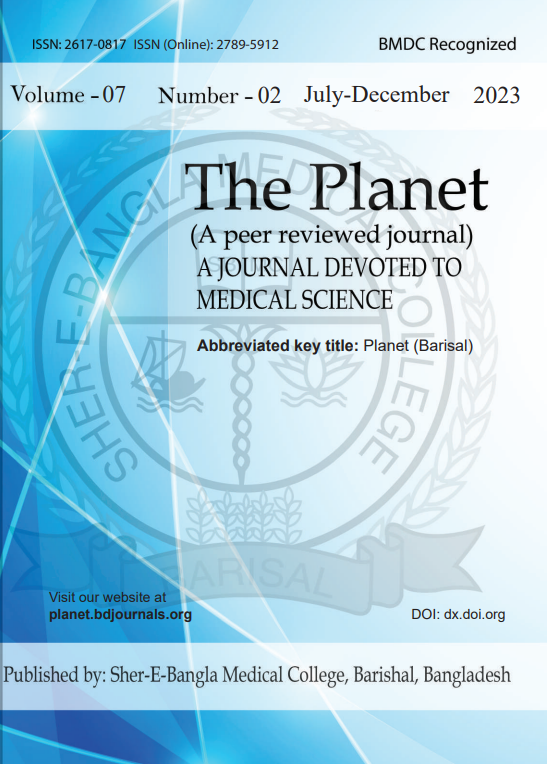Abstract
Introduction: Nephrotic syndrome (NS) is a common pediatric kidney disorder characterized by proteinuria, hypoalbuminemia, edema, and hyperlipidemia. It often presents as either an initial attack or a relapse, with varying clinical and biochemical features. This study investigates the differences in lipid profiles between children experiencing an initial attack and those with relapses of NS. Methods & Materials: This prospective analytic study was carried out in the Department of Pediatrics, Dhaka Medical College Hospital (DMCH) and Dhaka, from November 2015 to October 2017. A total of 60 children with nephrotic syndrome were studied, divided into two groups of 30 each. Group I included children with an initial attack, while Group II consisted of children presenting with first or subsequent relapses. Statistical analysis was done using the statistical package for social science (SPSS-22) program. Result: The study shows that puffy face, edema, and ascites were present in 100% of nephrotic syndrome (NS) cases, while genital swelling was more frequent in relapses (60% vs. 13.3%, p = 0.001). On admission, relapse cases had higher cholesterol (539.7 vs. 388.8 mg/dl), triglycerides (367.0 vs. 275.2 mg/dl), and LDL (414.5 vs. 284.9 mg/dl) compared to initial attacks (p < 0.001). During remission, these lipid levels improved but remained significantly higher in relapses, with HDL showing no significant difference. Conclusion: This study highlights significant lipid profile differences between initial attacks and relapses in childhood nephrotic syndrome. Relapse cases showed higher cholesterol, triglycerides, and LDL levels during active phases and remission compared to initial attacks.

This work is licensed under a Creative Commons Attribution 4.0 International License.
Copyright (c) 2024 The Planet


 PDF
PDF